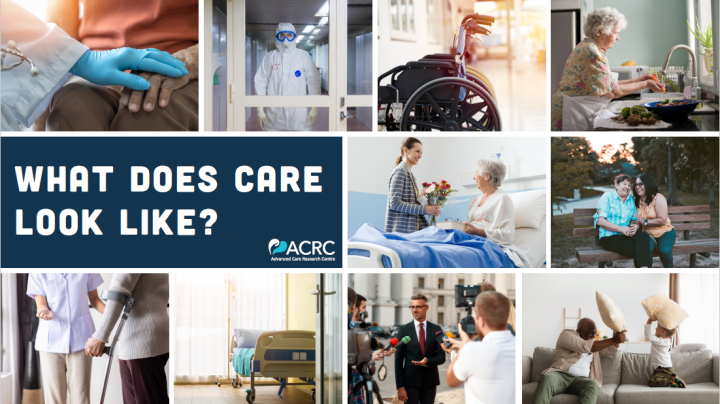What does care look like?
Work package 4.5 of the ACRC is asking the question “What does care in later life look like?”
Nichole Fernandez tells us a little about about the work she is doing on Images of Care, part of Understanding the person in context.
Media representations of care in later life have been largely understudied even though older adults are often addressed in the media through the topic of care. To help close this gap in research on care we have collected over 1,000 images from news articles published in the last two years that are relevant to the topic of care and later life.
Why study images of care?
Images not only help us make sense of the social world around us, but they also influence the way we see our place in the world. News images are important because they are a large part of the way we learn about the world around us. However, images used in news media do not always accurately represent real experiences of older adults. In general, older adults in popular culture and media are often portrayed as one homogenous group with little diversity or varied experiences. In the news, older people, like many marginalized communities, are often spoken for rather than spoken to. Older adults have often been depicted either as a burden or as vulnerable and in need of our help. Overall society sees ageing as something bad that we need to work to avoid. Therefore, studying images of care helps us to understand how society views and treats older adults along with how care is understood.
What have we learned so far?
While we are still analysing the news images there are a few preliminary findings that have stood out so far. We have learned that, according to these news images, care happens indoors, in private, and most often in a formal care setting such as a care home or hospital. Care towards older adults is represented largely through touch such as gestures of comfort like holding someone’s hands or physical assistance such as helping someone standup. The articles rarely address other forms of care or care that older adults give, particularly care between older adults.
The most obvious finding so far is that these images lack diversity. The news images portrayed very little racial diversity with older adults of colour making up only 3% of all older adults. While carers are slightly less likely to be white, they are also much more likely to be women with 78% of all carers in the images as female presenting.
What will we be doing next?
After analysing these images further we will begin workshops with older adults. These workshops will conduct a co-analysis with participants of the images we collected from the news. We will also begin conducting interviews with older adults where participants will create their own images of care in their daily life.


